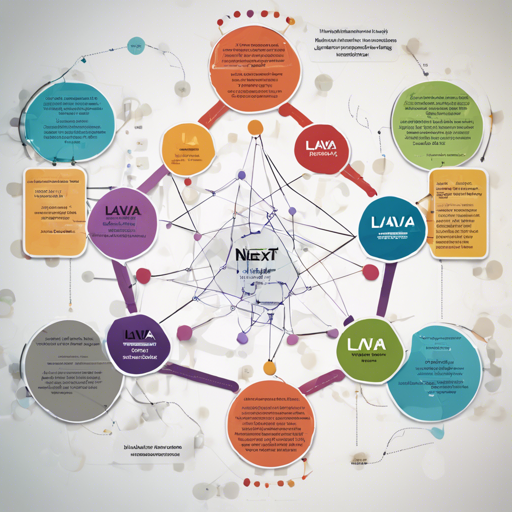The LLaVa-NeXT model is a powerful tool for enhancing interactions between images and text. By integrating advanced reasoning, optical character recognition (OCR), and world knowledge, it offers a unique approach to multimodal chatbot use cases. In this guide, we will walk you through the process of using LLaVa-NeXT effectively, troubleshoot common issues, and explore its functionalities.
What is LLaVa-NeXT?
LLaVa-NeXT is an upgraded version of LLaVa, enhancing its capabilities by increasing input image resolution and leveraging better training datasets. Imagine it as a highly skilled translator who captures both the essence of visual information and verbal cues, translating these into coherent responses.
- Multimodal Capabilities: Combines language and vision to facilitate better understanding and interaction.
- Enhanced Image Processing: Improved OCR capabilities for more accurate reading of text in images.
- Robust Knowledge Base: Infused with extensive world knowledge for contextual understanding.
Intended Uses
Utilize LLaVa-NeXT for various tasks, such as:
- Image Captioning
- Visual Question Answering
- Multimodal Chatbot Applications
To explore more versions of this model, visit the model hub.
Getting Started: Using LLaVa-NeXT
To initiate use of the LLaVa-NeXT model, follow these structured steps:
Step 1: Set Up Your Environment
Ensure you have the necessary libraries installed. Specifically, you will need the transformers library. You can install it via pip:
pip install transformersStep 2: Prepare Your Code
Use this Python snippet as a template for loading and using the LLaVa-NeXT model:
from transformers import LlavaNextProcessor, LlavaNextForConditionalGeneration
import torch
from PIL import Image
import requests
# Load Processor and Model
processor = LlavaNextProcessor.from_pretrained('llava-hf/lava-v1.6-34b-hf')
model = LlavaNextForConditionalGeneration.from_pretrained('llava-hf/lava-v1.6-34b-hf', torch_dtype=torch.float16, low_cpu_mem_usage=True)
model.to('cuda:0')
# Prepare Image and Prompt
url = "https://github.com/haotian-liu/LLaVA/blob/1a91fc274d7c35a9b50b3cb29c4247ae5837ce39/images/llava_v1_5_radar.jpg?raw=true"
image = Image.open(requests.get(url, stream=True).raw)
conversation = [
{'role': 'user', 'content': [{'type': 'text', 'text': 'What is shown in this image?'}, {'type': 'image'}]},
]
prompt = processor.apply_chat_template(conversation, add_generation_prompt=True)
inputs = processor(images=image, text=prompt, return_tensors='pt').to('cuda:0')
# Generate Response
output = model.generate(**inputs, max_new_tokens=100)
print(processor.decode(output[0], skip_special_tokens=True))The Analogy: Understanding Code Flow
Think of using the LLaVa-NeXT model as preparing a recipe for a delicious meal. You first gather all your ingredients (libraries and models), then you follow the recipe (code instructions) step-by-step to create your dish (generate responses). Each ingredient corresponds to a function or library you need to use, while the preparation steps mirror the code execution, culminating in the ‘meal’—your output response.
Troubleshooting Common Issues
- Model Not Loading: Ensure your paths and identifiers are correct. Verify that your GPU supports CUDA if you receive memory errors.
- Images Not Processing: Check the URL and ensure it is correct and accessible. You can test with different images.
- Outputs Not As Expected: Modify your input prompts for better specificity. Think of varying your questions for clearer responses.
- If issues persist, consult the documentation or community forums.
For more insights, updates, or to collaborate on AI development projects, stay connected with fxis.ai.
Model Optimization
To improve your model’s performance, consider the following optimizations:
- 4-bit Quantization: Install the bitsandbytes library with
pip install bitsandbytesand load your model in 4-bit to reduce memory usage.
model = LlavaNextForConditionalGeneration.from_pretrained(
'model_id',
torch_dtype=torch.float16,
low_cpu_mem_usage=True,
load_in_4bit=True
)model = LlavaNextForConditionalGeneration.from_pretrained(
'model_id',
torch_dtype=torch.float16,
low_cpu_mem_usage=True,
use_flash_attention_2=True
).to(0)Final Thoughts
At fxis.ai, we believe that such advancements are crucial for the future of AI, as they enable more comprehensive and effective solutions. Our team is continually exploring new methodologies to push the envelope in artificial intelligence, ensuring that our clients benefit from the latest technological innovations.
With LLaVa-NeXT, you have a robust tool to bridge the gap between image and text, enabling fascinating conversational capabilities with your applications. Happy coding!

